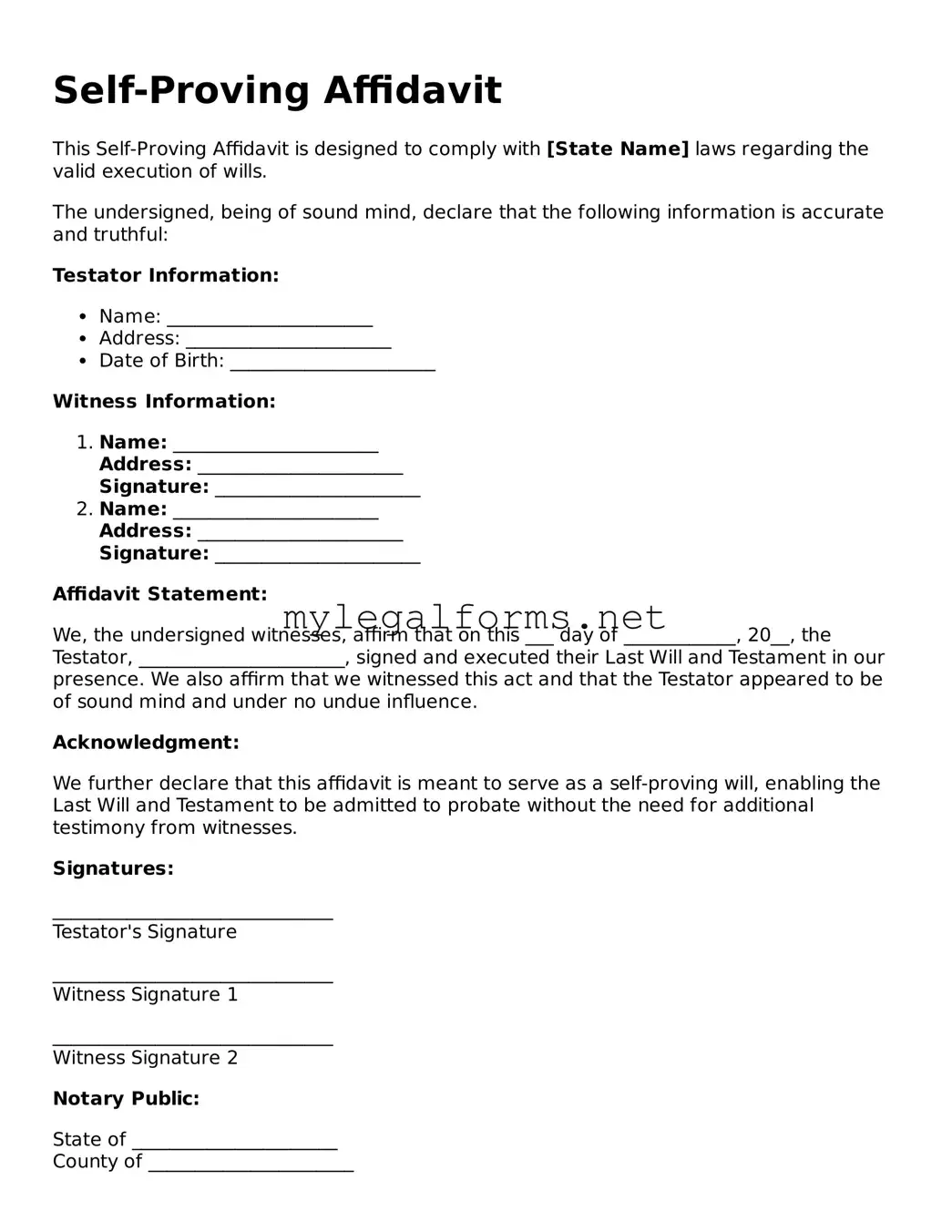Self-Proving Affidavit
This Self-Proving Affidavit is designed to comply with [State Name] laws regarding the valid execution of wills.
The undersigned, being of sound mind, declare that the following information is accurate and truthful:
Testator Information:
- Name: ______________________
- Address: ______________________
- Date of Birth: ______________________
Witness Information:
-
Name: ______________________
Address: ______________________
Signature: ______________________
-
Name: ______________________
Address: ______________________
Signature: ______________________
Affidavit Statement:
We, the undersigned witnesses, affirm that on this ___ day of ____________, 20__, the Testator, ______________________, signed and executed their Last Will and Testament in our presence. We also affirm that we witnessed this act and that the Testator appeared to be of sound mind and under no undue influence.
Acknowledgment:
We further declare that this affidavit is meant to serve as a self-proving will, enabling the Last Will and Testament to be admitted to probate without the need for additional testimony from witnesses.
Signatures:
______________________________
Testator's Signature
______________________________
Witness Signature 1
______________________________
Witness Signature 2
Notary Public:
State of ______________________
County of ______________________
Subscribed and sworn to before me this ___ day of ____________, 20__.
______________________________
Notary Public Signature
My commission expires: ________________
